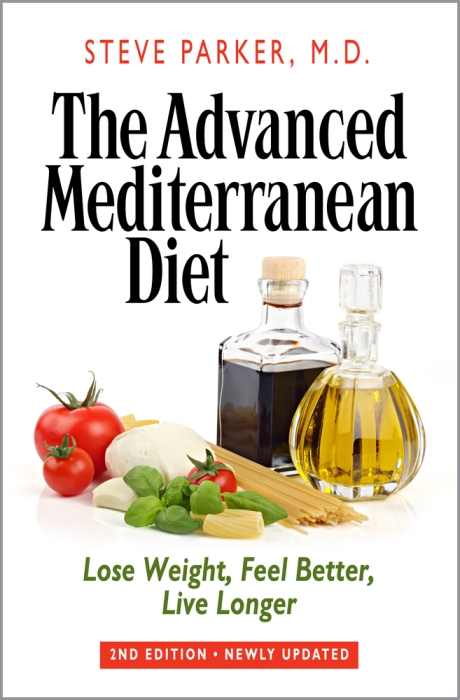We’re starting to see a resurgence of interest in ketogenic diets for weight loss and management, at least in the United States. Also called “very-low-carb diets,” ketogenic diets have been around for over a hundred years. A few writers in the vanguard recently are Jimmy Moore, Dr. Peter Attia, and Dr. Georgia Ede. Before them, Dr. Robert Atkins was a modern pioneer with his famous Atkins Diet and its Induction Phase.
What is a Ketogenic Diet?
There are many different programs but they tend to share certain characteristics. They restrict digestible carbohydrate consumption to 50 or fewer grams a day, sometimes under 20 grams. This totally eliminates or drastically reduces some foods, such as grains, beans, starchy vegetables (corn, potatoes, peas, etc), milk, and sugar. Nor can you have products made from these, such as bread, cookies, pies, cakes, potato and corn chips, and candy. You eat meat, eggs, fish, chicken, certain cheeses, nuts, low-carb vegetables (e.g., salad greens, broccoli, green beans, cauliflower), and oils. Total calorie consumption is not restricted; you count carb grams rather than calories. This is a radical change in eating for most people.
You’re may be wondering what “ketogenic” means. First, understand that your body gets nearly all its energy either from fats, or from carbohydrates like glucose and glycogen. In people eating normally, 60% of their energy at rest comes from fats. In a ketogenic diet, the carbohydrate content of the diet is so low that the body has to break down even more of its fat to supply energy needed by most tissues. Fat breakdown generates ketone bodies in the bloodstream. Hence, “ketogenic diet.” Some of the recent writers are using the phrase “nutritional ketosis” to summarize this metabolic state.
Ketogenic Versus Traditional Calorie-Restricted Dieting
Are there advantages to ketogenic diets for weight loss and management? Numerous recent studies have demonstrated superior weight-loss results with very-low-carb diets as compared to traditional calorie-restricted diets. Weight loss is often faster and more consistently in the range of one or two pounds (0.5 to 0.9 kg) a week. Very-low-carb dieters have less trouble with hunger. If you do get hungry, there’s always something you can eat. From a practical, day-to-day viewpoint, these diets can be easier to follow, with a bit less regimentation than calorie-restricted plans.
Ketogenic diets typically lower blood sugar levels, which is important for anyone with diabetes, prediabetes, and metabolic syndrome. We see higher levels of HDL cholesterol (the good kind), lower triglyceride levels, and a shift in LDL cholesterol to the “large fluffy” kind, all of which may reduce the risk of heart disease. Getting even further into the science weeds, very-low-carb diets reduce insulin levels in people who often have elevated levels (hyperinsulinemia), which may help reduce chronic diseases like type 2 diabetes, high blood pressure, some cancers, and coronary heart disease. Clearly, ketogenic diets work well for a significant portion of the overweight population, but not for everybody.
Sounds great so far! So why aren’t very-low-carb diets used more often? Many dieters can’t live with the restrictions. Your body may rebel against the switch from a carbohydrate-based energy metabolism to one based on fats. Most of us live in a society or subculture in which carbohydrates are everywhere and they’re cheap; temptation is never-ending.
What Could Go Wrong on a Ketogenic Diet?
Very-low-carb ketogenic diets have been associated with headaches, bad breath, easy bruising, nausea, fatigue, aching, muscle cramps, constipation, and dizziness, among other symptoms.
“Induction flu” may occur around days two through five, consisting of achiness, easy fatigue, and low energy. Atkins dieters came up with the term. It usually clears up after a few days. Some people think of induction flu as a withdrawal syndrome from sugar or refined carbohydrate. My conception is that it’s simply an adjustment period for your body to switch from a carbohydrate-based energy system to one based on fat. Your body cells need time to rev up certain enzymes systems while mothballing other enzymes. To prevent or minimize induction flu, Drs. Stephen Phinney, Jeff Volek, and Eric Westman routinely recommend eating 1/2 tsp of table salt daily.
Very-low-carb ketogenic diets may have the potential to cause osteoporosis (thin, brittle bones), kidney stones, low blood pressure, constipation, gout, high uric acid in the blood, excessive loss of sodium and potassium in the urine, worsening of kidney disease, deficiency of calcium and vitamins A, B, C, and D, among other adverse effects. From a practical viewpoint, these are rarely seen, and many experts say they don’t occur in a well-designed ketogenic diet eaten by an essentially healthy person. I favor ketogenic diets designed by physicians or dietitians. In view of these potential adverse effects, however, it’s a good idea to run your ketogenic diet of choice by your personal physician before you get started. This is especially important if you have diabetes, chronic kidney or liver disease, or a history of gout, low blood pressure, or kidney stones.
Athletic individuals who perform vigorous exercise should expect a deterioration in performance levels during the first four weeks or so of any ketogenic very-low-carb diet. Again, the body needs that time to adjust to burning mostly fat for fuel rather than carbohydrate.
Competitive weightlifters or other anaerobic athletes (e.g., sprinters) may be hampered by the low muscle glycogen stores that accompany ketogenic diets. They may need more carbohydrates, perhaps 150 grams a day.
What’s Next After Losing Weight on a Ketogenic Diet?
A majority of folks eventually increase their carbohydrate consumption above 50 grams a day, which usually takes them out of nutritional ketosis. If they return to the typical 200-300 grams a day that most people eat, they’ll probably gain the lost weight back. Many have found, however, that they can go up to 70-100 grams and maintain at a happy weight. A well-designed program should give careful instructions on the transition out of ketosis and avoidance of regain.
To see a ketogenic diet I designed for my patients, visit:
http://diabeticmediterraneandiet.com/ketogenic-mediterranean-diet/
Steve Parker, M.D.
Steve Parker, M.D., is a leading medical expert on the Mediterranean diet and creator of the world’s first low-carb Mediterranean diet. He has three decades’ experience practicing Internal Medicine and counseling on effective weight-loss strategies. Dr. Parker is the author of “The Advanced Mediterranean Diet: Lose Weight, Feel Better, Live Longer (2nd Edition),” “Conquer Diabetes and Prediabetes: The Low-Carb Mediterranean Diet, “ and “KMD: Ketogenic Mediterranean Diet.”










